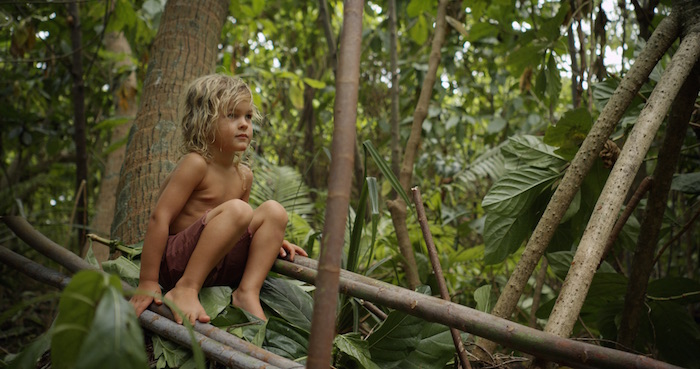COALESCE: A CITY COMPOSED
 Tuesday, August 29, 2017 at 1:03PM
Tuesday, August 29, 2017 at 1:03PM Featuring: Megan Jonas and Jordan Ignacio.
Director: Joshua J. Provost.
WORLD PREMIERE: Fer Film International Film Festival, September 2-6, Ferizaj, Republic of Kosovo.
AUSTRALIAN PREMIERE: flEXIff Experimental Film Festival, September 23-24, Sydney, Australia.
Rating: 4.5/5

The connectivity of creation that artists share is examined with profound beauty and sensitivity in Coalesce: A City Composed, the inspiring debut feature from Phoenix-based filmmaker, Joshua J. Provost. An intimate account of the formation of a uniquely envisioned art installation in the Arizona capital, the film can rank amongst its many fine accomplishments the re-imagining of the director’s rather unremarkable hometown as, in the eyes of these beholders, a place actually quite beautiful.
Imbuing Provost’s work with a spiritual centre are his subjects, artist Megan Jonas (pictured, top; on location in Phoenix) and composer Jordan Ignacio. Born-and-bred Arizonian Jonas creates unique and beautiful landscapes of Phoenix’s most mundane features; telephone wires, traffic intersections, footpaths, fuse boxes and alleyway weeds are all featured in her paintings, which Provost’s tight but non-intrusive camera captures from blank canvas to stunning life. East Coast muso Ignacio (pictured, below), aka The Languid Current, is a self-taught instrumentalist and master of the atmospheric aural soundscape.

Coalesce: A City Composed features four works by Jonas that capture her city as it transitions daily between light and dark. The artist forwards stages of her paintings to Ignacio, now embedded in his own Phoenix digs, who uses her work to inspire music that would eventually accompany the paintings during a season at Phoenix’s Grand ArtHaus Gallery, from December 2016. In hushed, intimate tones, Provost’s on-screen collaborators speak of that which inspires, influences and ultimately determines the essence of their art, all while it finds form before our eyes.
Provost is clearly in the same creative headspace as his subjects; from capturing their inspiration with a precise insight to giving over his film to their commentary unhindered by clunky voice-over, Provost affords Jonas and Ignacio the space and respect needed for true freedom of expression. Rarely has a film been so in tune with the ‘artistic process’, or conveyed with such clarity the workings of the artist’s mind.
Coalesce: A City Composed ends with a flourish of bravura film-making that is a breathtaking coming-together of all three art forms. Each painting takes shape before your eyes, via daring post-production wizardry, to the compelling strains of the richly-realized soundtrack; three distinct disciplines creating one beautiful piece of art. A final nod to the locations that inspired the paintings/music/film is a heartfelt touch by Provost, who has crafted a deeply engaging film of intelligence, integrity and sincerity.
 Art,
Art,  Documentary,
Documentary,  Music
Music 


















